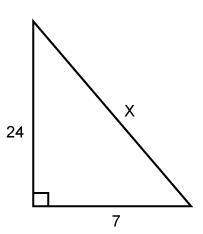
Mathematics, 18.02.2020 06:19 dania1524
Larry and Beth are both married, working adults. They both plan for retirement and consider the $6,000 annual contribution a must.
First, consider Beth's savings. She began working at age 20 and began making an annual contribution to her IRA of $6,000 each year until age 32 (12 contributions). She then left full time work to have children and be a stay at home mom. She left her IRA invested and plans to begin drawing from her IRA when she is 65.
Larry started contributing to his IRA at age 32. The first 12 years of his working career, he used his discretionary income to buy a home, upgrade the family cars, take vacations, and pursue his golfing hobby. At age 32, he made his first $6,000 contribution to an IRA, and contributed $6,000 every year up until age 65 (33 contributions). He plans to retire at age 65 and make withdrawals from his IRA.
Both IRA accounts grow at an 8% annual rate

Answers: 1


Another question on Mathematics

Mathematics, 21.06.2019 14:50
What is the volume of the sphere shown below with a radius of 3?
Answers: 1


Mathematics, 21.06.2019 17:00
In tossing one coin 10 times, what are your chances for tossing a head? a tail? 2. in tossing one coin 100 times, what are your chances for tossing a head? a tail? 3. in tossing one coin 200 times, what are your chances for tossing a head? a tail? deviation = ((absolute value of the difference between expected heads and observed heads) + (absolute value of the difference between expected tails and observed tails)) divided by total number of tosses. this value should always be positive. 4. what is the deviation for 10 tosses? 5. what is the deviation for the 100 tosses? 6. what is the deviation for 200 tosses? 7. how does increasing the total number of coin tosses from 10 to 100 affect the deviation? 8. how does increasing the total number of tosses from 100 to 200 affect the deviation? 9. what two important probability principles were established in this exercise? 10. the percent of occurrence is the obtained results divided by the total tosses and multiplied by 100%. toss the coins 100 times and record your results. calculate the percent occurrence for each combination. percent head-head occurrence: percent tail-tail occurrence: percent head-tail occurrence:
Answers: 3

Mathematics, 21.06.2019 20:30
Elizabeth claims that the fourth root of 2 can be expressed as 2^m since (2^m)^n = 2. find the values of m and n for the case where elizabeth's claim is true.
Answers: 3
You know the right answer?
Larry and Beth are both married, working adults. They both plan for retirement and consider the $6,0...
Questions












Chemistry, 26.03.2020 16:16













